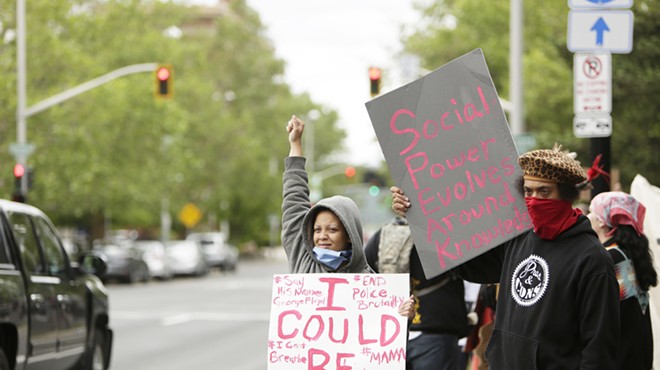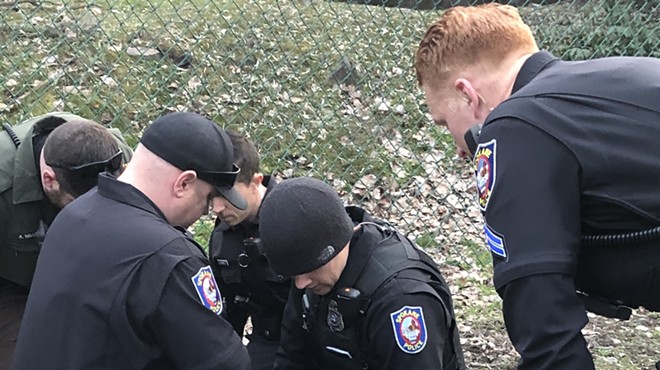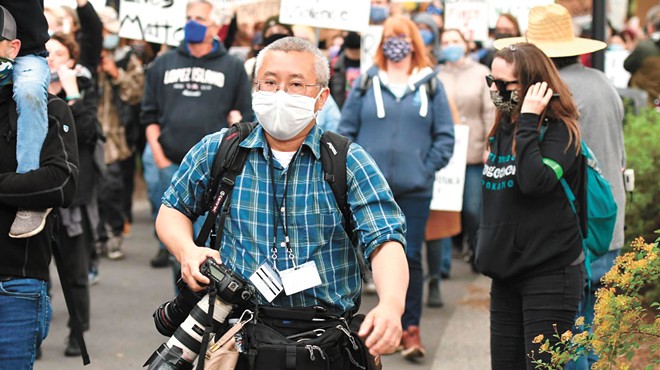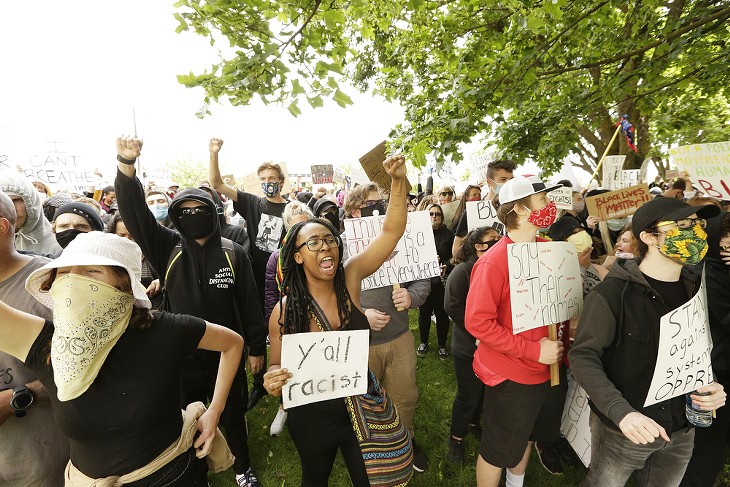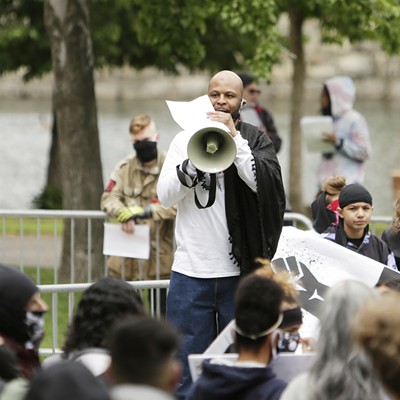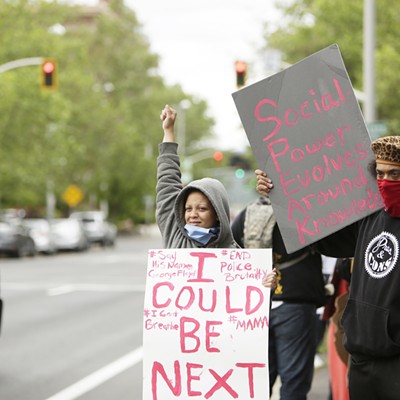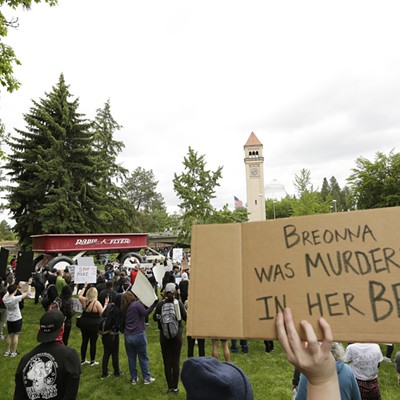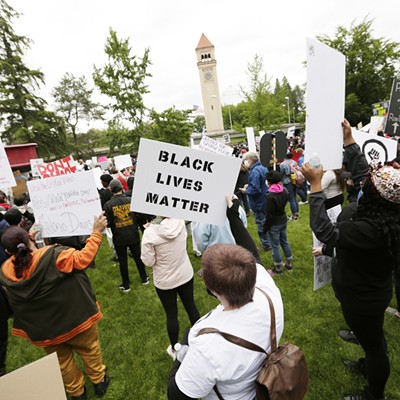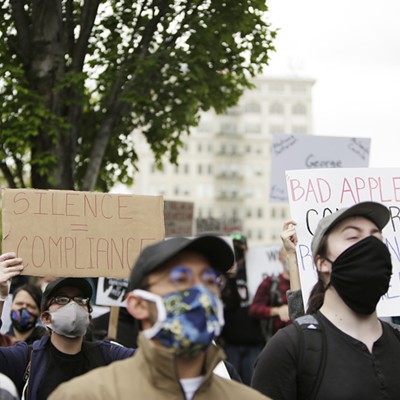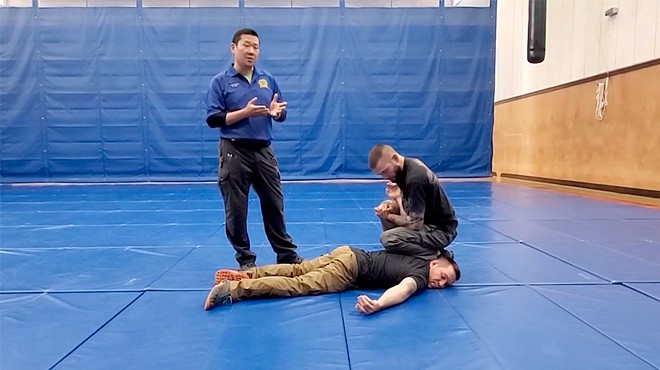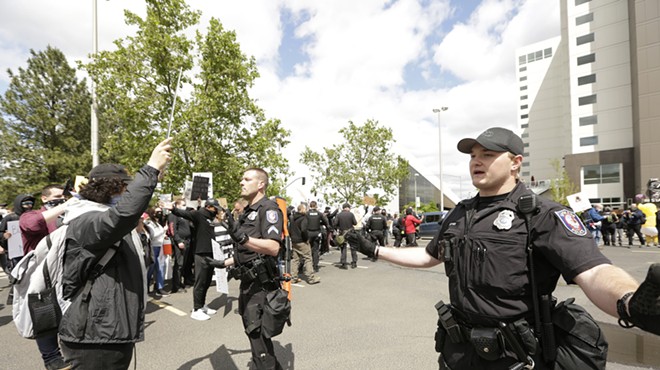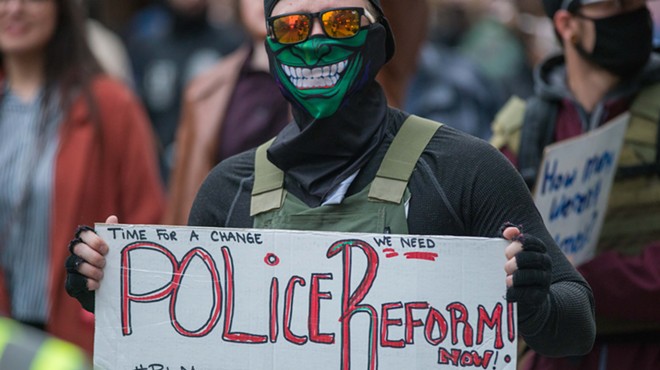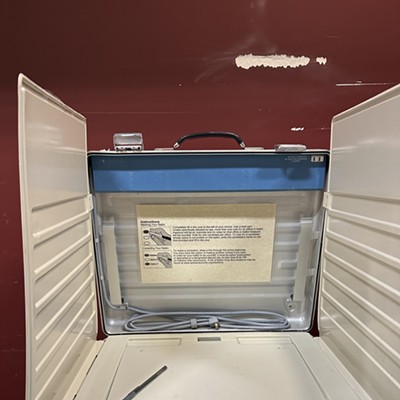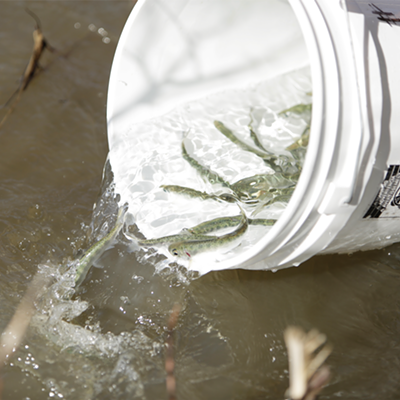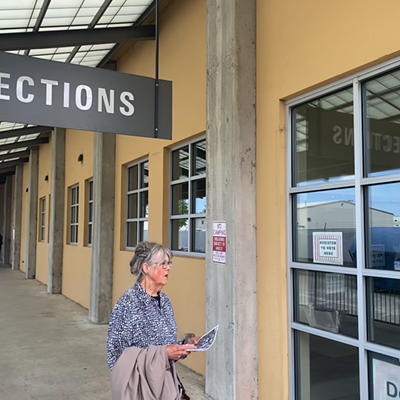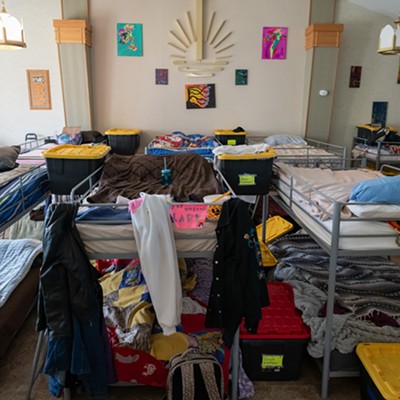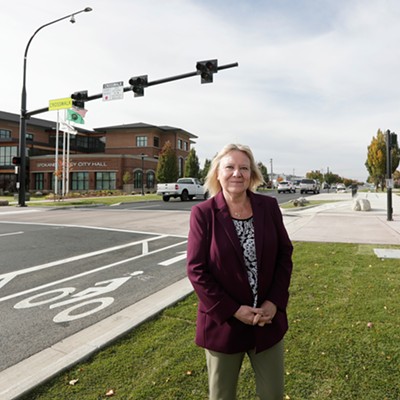"I said, 'I can't go into the tear gas,'" Gallardo tells the Inlander. "There's nowhere for me to go."
That's when she says one of the officers went after her. Several others followed.
"So I turned away to run through it, and he tackled me into the very same tear gas I was trying to avoid. And then one of the officers had his knee in the back of my neck," she says. "I couldn't breathe. I was thinking of my kids. I was moments from death."
She says she yelled "I can't breathe" multiple times. Then, she heard another officer say to get off, and the knee came off her neck. She was arrested and booked into jail for disorderly conduct.
The incident was captured on a video that's been obtained by the Inlander. The video has been spreading on social media since it happened last Sunday. The Spokane Police Ombudsman, Bart Logue, says he's received multiple complaints about the arrest, including from Gallardo.
No no no.
Posted by Scott Lea on Sunday, May 31, 2020
Gallardo, a descendent of the both the Spokane and Coeur d'Alene tribes, says police never returned her drum and she found her ceremonial feather fan broken in half.
Spokane Police Chief Craig Meidl says in an email that "once the very clear and unequivocal direction was given to disperse, opportunity was provided for individuals to leave. Many individuals decided they would not leave, per the lawful directive."
Meidl says he does not have any details about this specific arrest, but says officers "continued to be pelted with rocks and bricks" when they gave the order for everyone to disperse.
"Many people, as video clearly shows, decided to ignore this directive," Meidl says. "I lack the details to know where she fits into the equation."
Gallardo, 34, is an activist and co-founder of a nonprofit called the MAC Movement, which uses music, art and creativity to address social issues. Before she was arrested, she was protesting with her sister and the other co-founder of the MAC Movement, Crystle Burgett.
The sisters were peacefully protesting that day, and around 7:15 met with a group of protesters on Howard Street between Riverside and Main who faced a line of police officers and chanted "Hands up don't shoot" and "I can't breathe." Gallardo separated from her sister and started beating her drum to the chants with the other protesters.
"And then the next thing I know they started shooting at us," Gallardo says. "And I had to gather my stuff because I just sent it down."
She grabbed her bag and her drum, she says, and then she was walking with the police.
"I turned to them and said you didn't have to shoot at us, we have a right to a peaceful protest," Gallardo says. "He shooed at me to go."
The video of her arrest appears to show two officers waving her on. She walks toward the tear gas, and turns back, shaking her head and moving back towards the police. The video cuts away from her for a second before she can be seen rushing away from an officer who takes her down in the cloud of tear gas. Several other officers rush at her, and one appears to kick away the can of tear gas. Three officers pin her to the ground, with one appearing to put his knee on her neck area before he pulls it off.
The arrest took place following looting at the Nike Store, and before the curfew was imposed for downtown. Julie Humphreys, a spokeswoman for the Spokane Police Department, says police can "absolutely" order protesters to disperse public spaces outside of curfew.
When asked what provoked police officers to arrest her, Humphreys says her understanding is that Gallardo had been told "numerous times" to disperse.
Humphreys says she can't tell from the video if the officer's knee is on Gallardo's neck or on her back. (Gallardo says it's on her neck.) But Spokane Police train that it's OK to put pressure on the neck of a person temporarily, though never for an extended period of time, Humphreys says.
The Washington State Criminal Justice Training Commission said in a statement this week that its trainers do not train officers to place their knee on the back of a subject's neck.
"Effective immediately, our trainers will explicitly state in training that placing the knee of a subject's neck and applying pressure is deadly and should never be done unless the situation clearly warrants the use of deadly force," the commission says.
Burgett says she was looking for her sister for nearly three hours before she found out she'd been arrested. Then, she pulled together money for bail, and the Bail Project got Gallardo out of jail.
Burgett says she and her sister went to the protest "in prayer." They'd previously protested the Dakota Access pipeline near the Standing Rock Sioux Indian Reservation, but Burgett says the situation in Spokane was even more chaotic. She didn't expect this to happen in Spokane.
"Not a part of me fully believed it was going to escalate here," Burgett says.
Meidl says the environment was chaotic for his officers, too.
"A common trend across the nation is to discredit law enforcement when the very people trying to discredit law enforcement were violating lawful direction to clear downtown to prevent further violence and damage of property," Meidl says.
After her arrest, Gallardo says she thought the police in Spokane were sending a message.
"We went there to send our message," she says. "And they sent a message back."

